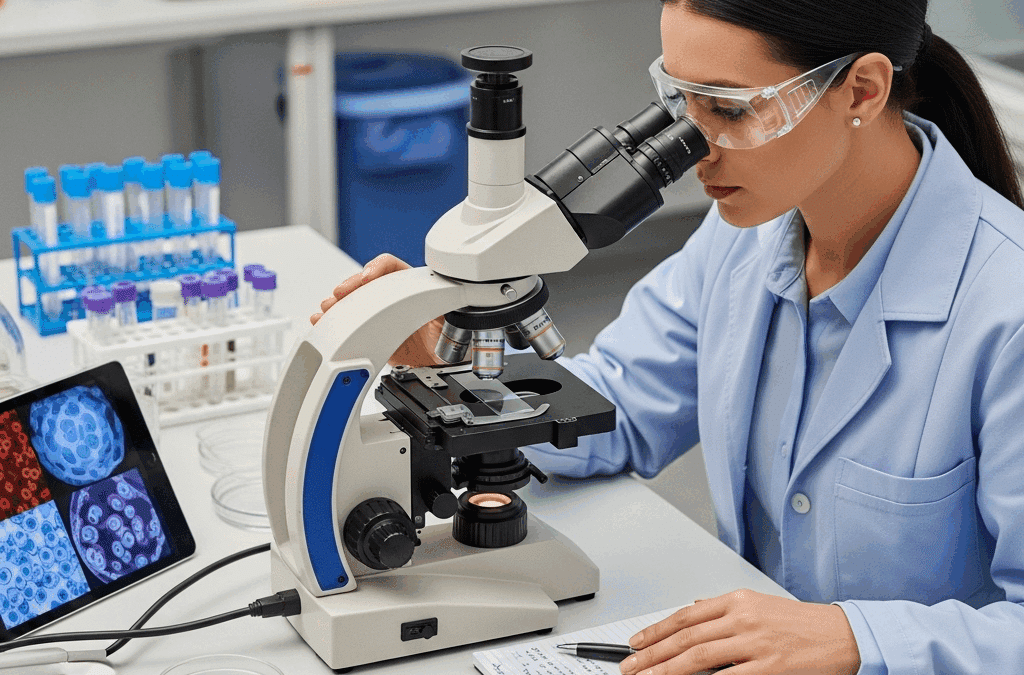Yes, you will absolutely still receive standard pathology when you opt to cryopreserve your tissue. These are two distinct and complementary processes, both vital for cancer diagnosis and treatment.
Here’s a breakdown of why and how they coexist:
- Standard Pathology (FFPE) is for Immediate Diagnosis:
- The primary and immediate purpose of any biopsy or surgical tissue removal is to provide a sample for pathological diagnosis. This is how your cancer is definitively identified, classified (e.g., type of cancer, grade), and staged.
- For this, the pathology lab requires a portion of your tissue to be formalin-fixed and paraffin-embedded (FFPE). This process preserves the tissue’s morphology (structure and appearance) exceptionally well, allowing pathologists to cut very thin sections, stain them (e.g., with H&E stain), and examine them under a microscope.
- This is the standard procedure to confirm the presence of cancer, differentiate it from benign conditions, and guide initial treatment decisions. This step is non-negotiable for diagnosis.
- Cryopreservation of my Tumor Tissue is for Advanced Molecular & Future Use:
- When you choose to cryopreserve your tissue (e.g., with a service like SpeciCare), you are essentially requesting that an additional portion of your tissue be set aside before it goes into formalin.
- This “extra” tissue is then immediately flash-frozen to preserve its biomolecules (DNA, RNA, proteins) in their native state and, importantly, often retain cell viability.
- This cryopreserved tissue is not typically used for immediate microscopic diagnosis but rather for the advanced molecular profiling, personalized drug testing, and potential future therapies we’ve discussed.
How the Process Works (Coordination is Key):
- Tissue Collection: During your biopsy or surgery, the surgeon will remove the tumor tissue.
- Pathology’s First Look: A pathologist (or a pathology assistant) is often present or readily available. Their first priority is to triage the specimen. They will take the necessary amount of tissue required for standard diagnostic pathology (FFPE). This amount is usually relatively small but sufficient for accurate diagnosis.
- Diversion for Cryopreservation of Tumor Tissue: If you’ve made prior arrangements for cryopreservation, another portion of the tumor tissue (ideally from the same primary tumor or a representative area) will be immediately separated, placed into the specialized cryopreservation kit (like SpeciCare’s SpeciKit®), and prepared for flash-freezing.
- Simultaneous Processes: These two processes happen concurrently or in very quick succession. The goal is to get the diagnostic portion into formalin quickly and the cryopreservation portion frozen quickly, minimizing “warm ischemia time” for both.
- Separate Storage: The FFPE tissue goes to the hospital’s pathology lab for processing and storage in paraffin blocks (usually at room temperature). The cryopreserved tissue goes to the specialized biobank (like SpeciCare’s facility) for ultra-cold storage.
Why Both Are Needed:
- Complementary Information: FFPE tissue provides crucial architectural and cellular detail for diagnosis. Cryopreserved tissue provides high-quality molecular information and viable cells for functional testing that FFPE cannot. They offer different, but equally valuable, insights into your cancer.
- Legal and Clinical Necessity: Standard pathology is a legal and clinical requirement for definitive diagnosis and treatment planning based on established guidelines. Cryopreservation is an elective, proactive measure to explore cutting-edge personalized medicine.
Therefore, when you choose cryopreservation of your tumor tissue, you are adding an extra layer of advanced care and future potential, without compromising the standard, essential diagnostic process.

Recent Comments